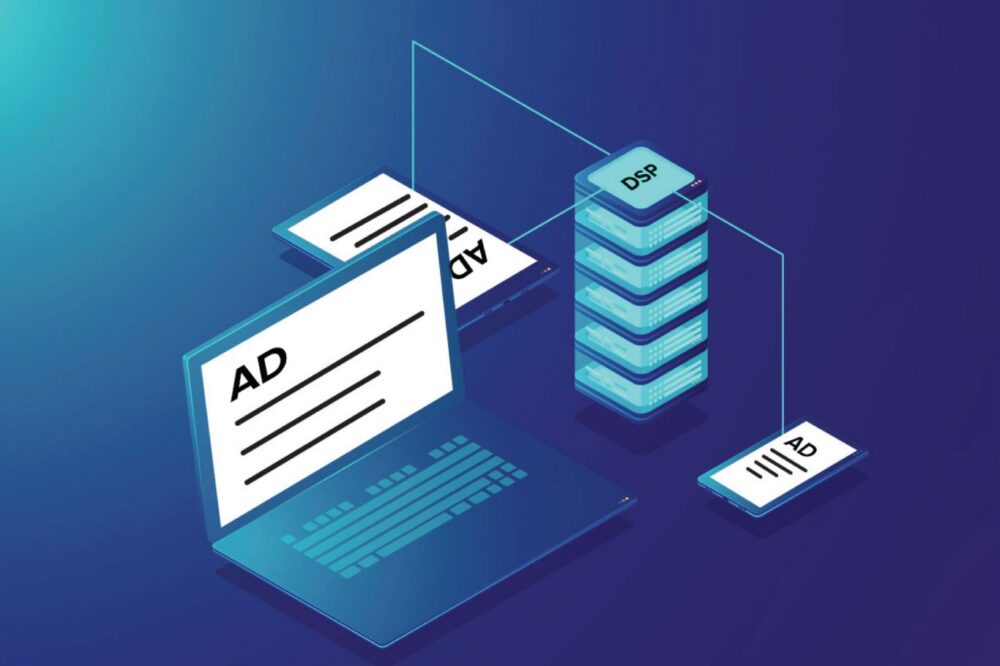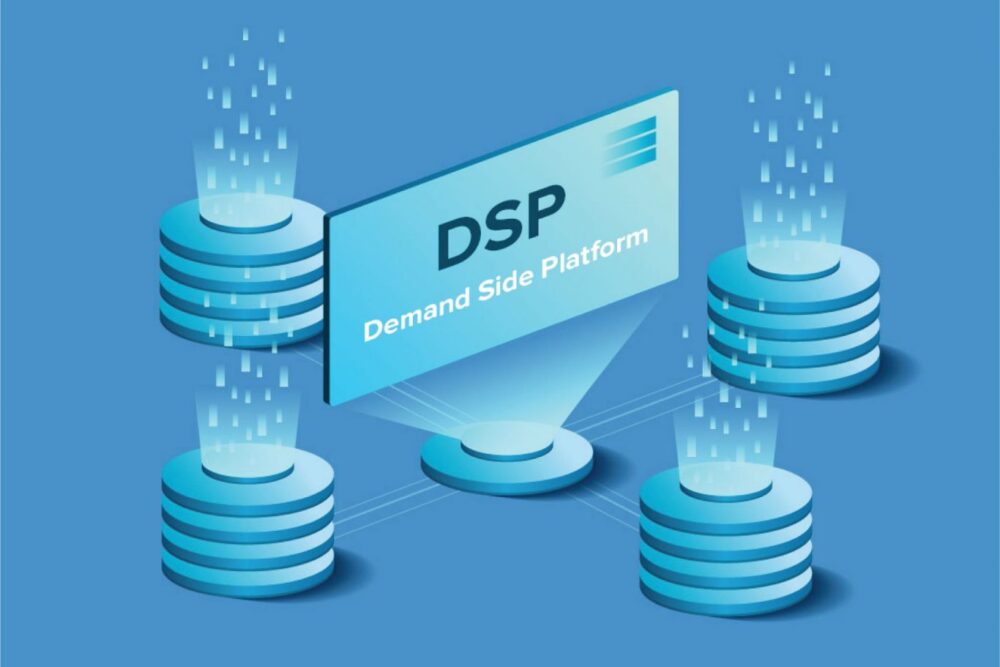Traffic DSP – The Latest ClickAdilla Feature for Affiliate Marketing Campaign Management Digital marketing is an ever-evolving industry, with new tools and features being introduced frequently. One of the latest developments in this field is Traffic DSP – a new feature from ClickAdilla that allows advertisers to manage their affiliate marketing campaigns more efficiently. In this article, we’ll take a closer look at what Traffic DSP is, why it’s beneficial to use, and how it works.
What is Traffic DSP?

Source: brid.tv
DSP platform for automatic programmatic media buying based on a real-time bidding (RTB) auction. Essentially, it’s a service that allows advertisers to integrate third-party traffic sources and manage their advertising accounts through ClickAdilla’s interface. Before Traffic DSP, advertisers had to create similar campaigns in each network they worked with and manage them separately. How does it work? With the RTB auction system, advertisers can purchase traffic at an optimal price, which is much cheaper than direct buying. In contrast to direct buying, where the price is fixed for each campaign, the real-time bidding system is more flexible, and the Traffic DSP service offers additional possibilities for third-party traffic filtration via ClickAdilla DSP filter tools.
Why use Traffic DSP?
There are several benefits to using Traffic DSP. Firstly, it saves a lot of money since you do not have to pay ad networks the margin of the traffic. Secondly, it saves advertisers time when running several campaigns on various platforms. Using Traffic DSP, you can see and control all your advertising activities and statistics in one interface and manage them altogether or separately. Additionally, you are provided with a personal manager ready to assist you any time you require. Another advantage of Traffic DSP is that it provides more control over your campaigns. You can choose any third-party traffic supplier that supports RTB or XML and integrate it as a third-party SSP. This flexibility allows advertisers to use their preferred networks and tools, while still enjoying the benefits of ClickAdilla’s interface and management tools.
How to use Traffic DSP?

Source: knorex.com
To use Traffic DSP, you need to have an advertising account with third-party traffic sources, and all financial calculations for external traffic sources are also carried out by the user independently. While using Traffic DSP, you only pay a fixed price for the service, not for the traffic. Certainly! Let’s explore some additional features and functionalities of Traffic DSP. One notable feature of Traffic DSP is its advanced filtering capabilities. ClickAdilla’s DSP filter tools allow advertisers to apply various filters to third-party traffic sources, ensuring that they receive high-quality, relevant traffic for their campaigns. These filters can include targeting options such as geolocation, device type, operating system, browser, and more. By fine-tuning their targeting parameters, advertisers can reach their desired audience more effectively, increasing the chances of conversions and maximizing campaign success. Furthermore, Traffic DSP provides advertisers with detailed analytics and reporting features. The platform offers comprehensive performance metrics and data visualization tools that enable advertisers to monitor the progress of their campaigns. They can track key metrics such as impressions, clicks, conversions, cost per acquisition (CPA), return on ad spend (ROAS), and more. By analyzing these metrics, advertisers can gain valuable insights into the effectiveness of their campaigns and make data-driven decisions to optimize their strategies further. Another important aspect of Traffic DSP is its support for retargeting campaigns. Retargeting allows advertisers to reconnect with users who have previously interacted with their brand or website. By using Traffic DSP, advertisers can seamlessly integrate retargeting pixels or codes from their preferred retargeting providers and efficiently reach these engaged users. Retargeting campaigns have proven to be highly effective in increasing conversions and driving repeat business.

Source: knorex.com
Traffic DSP also supports various ad formats, including display banners, native ads, and pop-unders. This versatility allows advertisers to choose the ad formats that best suit their campaign objectives and target audience. Advertisers can create visually appealing and engaging ads to capture users’ attention and drive desired actions. With the ability to select from a range of ad formats, advertisers can tailor their campaigns to match the preferences and behaviors of their target audience. Additionally, Traffic DSP offers real-time campaign optimization features. Advertisers can monitor the performance of their campaigns in real-time and make adjustments accordingly. They can adjust bid prices, modify targeting parameters, or even pause underperforming campaigns to ensure that their budget is allocated effectively and that their campaigns are delivering the desired results. This real-time optimization capability empowers advertisers to be agile and responsive, maximizing the impact of their campaigns. Lastly, Traffic DSP provides a seamless integration process with third-party tracking platforms and affiliate networks. Advertisers can easily integrate their preferred tracking solutions, ensuring accurate measurement and attribution of conversions. This integration simplifies the campaign management workflow and allows advertisers to have a holistic view of their marketing efforts. One of the key advantages of Traffic DSP is its ability to provide advertisers with access to a vast network of global traffic sources. ClickAdilla has established partnerships with a wide range of reputable traffic suppliers, ensuring that advertisers have access to high-quality, targeted traffic from various regions around the world. This global reach allows advertisers to expand their campaigns and target specific markets or demographics, ultimately increasing their reach and potential customer base.

Source: corporate.bonial.com
Another notable feature of Traffic DSP is its ability to optimize campaigns based on specific performance goals. Advertisers can set key performance indicators (KPIs) such as cost per click (CPC), cost per action (CPA), or return on investment (ROI), and the platform will automatically optimize the campaign settings to achieve those goals. This automated optimization process saves advertisers time and effort, as the system continuously adjusts bids, targeting, and other parameters to maximize campaign performance and deliver the desired outcomes. Furthermore, Traffic DSP offers enhanced audience targeting options. Advertisers can leverage advanced targeting capabilities such as demographic targeting, interest-based targeting, behavior targeting, and more. This granular targeting allows advertisers to reach their ideal audience, ensuring that their ads are shown to users who are more likely to engage with the content and convert into customers. By narrowing down their targeting parameters, advertisers can improve the efficiency and effectiveness of their campaigns, resulting in higher conversion rates and better overall performance. In addition to audience targeting, Traffic DSP also provides advertisers with the option to perform contextual targeting. This means that advertisers can deliver their ads to users based on the context of the website or content they are browsing. By aligning their ads with relevant content, advertisers can increase the chances of capturing the attention of users who are actively interested in their products or services. Contextual targeting adds another layer of precision to campaign targeting and can significantly improve ad relevance and engagement. Moreover, Traffic DSP offers robust tracking and conversion attribution capabilities. Advertisers can implement conversion tracking pixels or codes to accurately measure and attribute conversions to their advertising efforts. This data-driven approach allows advertisers to identify the most effective traffic sources, campaigns, and creatives, enabling them to optimize their strategies and allocate their budget more efficiently. By understanding the performance of different elements of their campaigns, advertisers can make informed decisions to drive better results and maximize their return on investment.

Source: appsamurai.com
Lastly, Traffic DSP provides advertisers with transparent reporting and data insights. The platform offers comprehensive reporting tools that allow advertisers to analyze campaign performance, monitor key metrics, and generate customized reports. By having access to detailed data and insights, advertisers can gain a deeper understanding of their audience, identify trends, and uncover actionable insights to refine their strategies and improve campaign outcomes. In summary, Traffic DSP offers a comprehensive set of features and functionalities that empower advertisers to manage their affiliate marketing campaigns more efficiently. From advanced filtering options and detailed analytics to support for retargeting campaigns and real-time optimization capabilities, Traffic DSP provides advertisers with the tools they need to achieve their campaign objectives. By leveraging the platform’s features and integrating their preferred networks and tools, advertisers can drive better results, increase their ROI, and stay ahead in the competitive digital marketing landscape.












